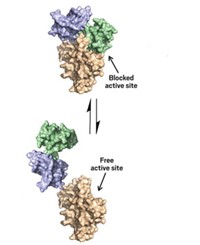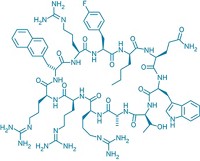Advertisement
Grab your lab coat. Let's get started
Welcome!
Welcome!
Create an account below to get 6 C&EN articles per month, receive newsletters and more - all free.
It seems this is your first time logging in online. Please enter the following information to continue.
As an ACS member you automatically get access to this site. All we need is few more details to create your reading experience.
Not you? Sign in with a different account.
Not you? Sign in with a different account.
ERROR 1
ERROR 1
ERROR 2
ERROR 2
ERROR 2
ERROR 2
ERROR 2
Password and Confirm password must match.
If you have an ACS member number, please enter it here so we can link this account to your membership. (optional)
ERROR 2
ACS values your privacy. By submitting your information, you are gaining access to C&EN and subscribing to our weekly newsletter. We use the information you provide to make your reading experience better, and we will never sell your data to third party members.
Biological Chemistry
Englerin A Targets Uncovered
Drug Discovery: Natural product kills kidney cancer cells by activating ion channels
by Stu Borman
February 26, 2015
| A version of this story appeared in
Volume 93, Issue 9

Since its discovery six years ago, the molecule (–)-englerin A has received a lot of attention from organic chemists and biologists. The natural product has a complex architecture that makes it a challenging synthetic target, and its ability to kill kidney cancer cells selectively makes it a promising drug lead.
But little is known about the mechanism behind englerin A’s anticancer properties. Now, in findings that could lead to new antitumor agents, researchers have discovered two cellular binding partners for the small molecule and have proposed the way it works.
Kidney cancer is often treated surgically and responds poorly to existing drugs, which can have serious side effects. So new drugs based on englerin A could help improve outcomes for patients.
In 2009, John Beutler of the National Cancer Institute (NCI), in Frederick, Md., and coworkers reported having isolated englerin A from the bark of Phyllanthus engleri, a southeastern African bush or small tree named after the late German botanist Adolf Engler. They discovered that the compound kills kidney cancer cells selectively (Org. Lett. 2009, DOI: 10.1021/ol802339w).
Researchers led by Mathias Christmann, now at the Free University of Berlin, reported the first total synthesis later that year (Angew. Chem. Int. Ed. 2009, DOI: 10.1002/anie.200905032; C&EN, Nov. 16, 2009, page 40). More than a dozen other englerin A syntheses have since been carried out by chemists.
Now, a team led by Christmann; David J. Beech of the University of Leeds, in England; and Herbert Waldmann of the Max Planck Institute for Molecular Physiology, in Dortmund, Germany, has found englerin A’s protein targets: Ca2+ ion-channel proteins called TRPC4 and TRPC5 (Angew. Chem. Int. Ed. 2015, DOI: 10.1002/anie.201411511). The researchers used assays and a battery of other tests to confirm that englerin A strongly activates TRPC ion channels on kidney cancer cell surfaces, boosting Ca2+ influx and killing the cells.
The findings build on two earlier studies. One found an enzyme called PKC-θ to be an englerin A target, but that enzyme isn’t found in a key type of kidney cancer cell, suggesting that an additional target or targets must exist (Cancer Cell 2013, DOI: 10.1016/j.ccr.2012.12.007). In the other study, researchers linked TRPC4 to kidney cancer, flagging TRPC proteins as possible targets (FEBS J. 2007, DOI: 10.1111/j.1742-4658.2007.06159.x).
Christmann, Beech, Waldmann, and coworkers propose that englerin A works by overactivating the Ca2+ ion channels. But they don’t yet know why the agent selectively kills cancer cells, since some noncancerous cells express TRPC proteins as well. It’s also possible that the TRPC proteins and PKC-θ interact in some way, but right now “no one has any idea how,” Beutler says.
“It has been very tough identifying with any certainty what the specific targets of englerin A are,” says Joe W. Ramos, director of the Cancer Biology Program at the University of Hawaii Cancer Center, Manoa. “I have myself been trying for some time.” He calls the new study “a breakthrough” but notes that “it remains to be seen if englerin A will prove to be a viable drug.”
The Max Planck Society’s Lead Discovery Center and NCI are currently both trying to develop a drug candidate based on englerin A for treatment of kidney cancer.





Join the conversation
Contact the reporter
Submit a Letter to the Editor for publication
Engage with us on Twitter